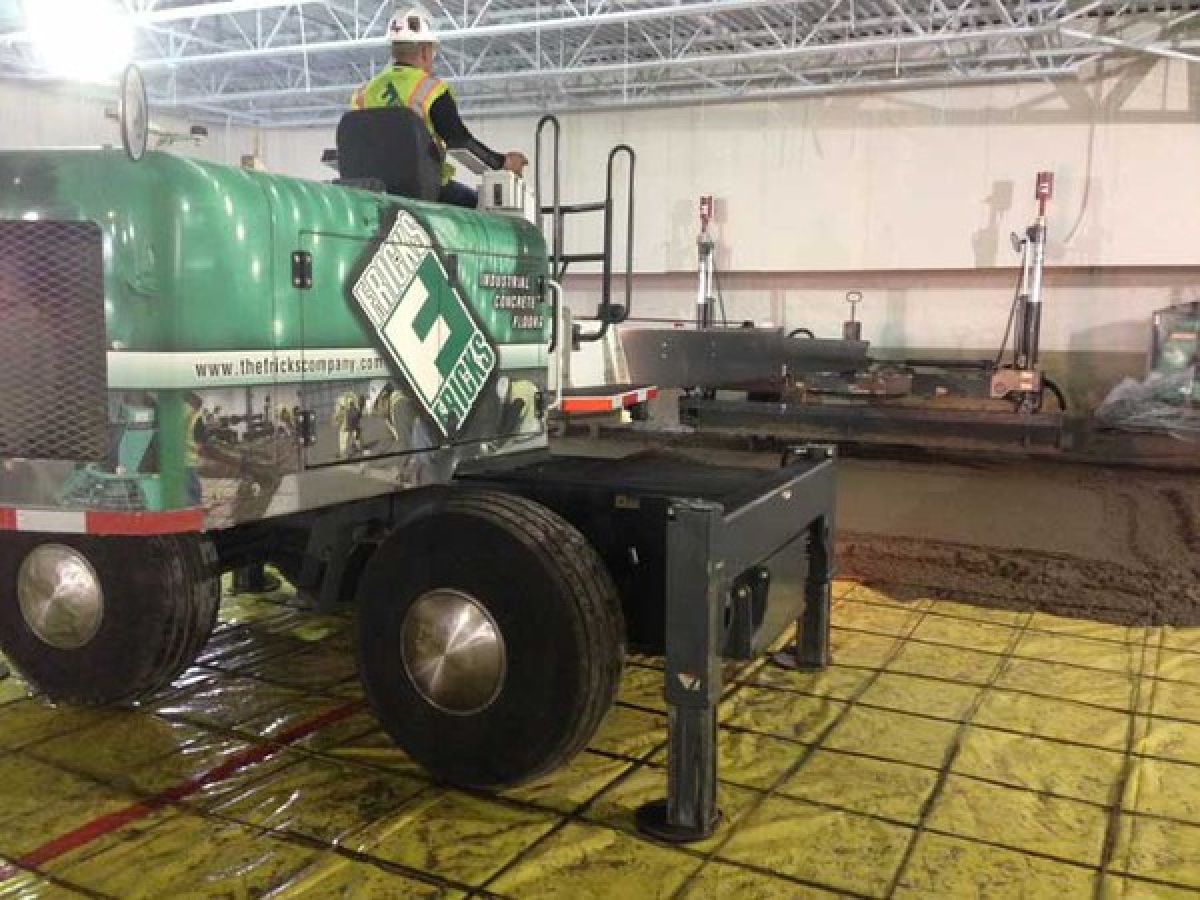Why Do Refrigerated Warehouse Floors Require Vapor Barriers?
It is commonplace, and required, to use a vapor retarder or barrier beneath concrete slabs in schools, hospitals, homes, and all other inhabited building spaces, but what about cold storage (refrigeration or freezer) facilities? In these climate-controlled, cooled environments, is it necessary to take the soil out of play? The simple answer is “yes.”
Just recently the American Concrete Industry (ACI 302 and ACI 360) began recommending that vapor retarders and barriers be used specifically under all “climate-controlled cooled environments.” Typically, these facilities use rigid insulation under the concrete slabs, and there is a misconception that this insulation can perform as a low permeance vapor retarder or barrier. This is not the case.
Rigid insulation allows far too much moisture through it to be considered a vapor retarder or barrier; the perm rating of one inch of standard expanded polystyrene (EPS) insulation is approximately 2 – 5.8 perms, which is significantly higher than the benchmarks the American Concrete Institute has set.
A below-slab vapor retarder has been defined as a product with a permeance of less than 0.1 perms after conditioning tests, whereas a vapor barrier has been generally defined as a product with a permeance of 0.01 perms or less after conditioning tests.
There are several benefits to having a low permeance vapor retarder or barrier protecting these types of facilities, but they are particularly important when food or sensitive products are being stored. In these situations, it is critical to isolate the contents from any type of contamination, soil organisms, or harmful gases. The vapor pressure in a cold storage or freezer facility is two to three times less than the vapor pressure beneath the concrete slab. If a vapor retarder is not used beneath the facility, moisture, soil organisms, and harmful gases are freely allowed to pass into the building.
Also, by taking the soil out of play, and in turn dramatically reducing the amount of unwanted water vapor diffusing into the cooled interior space, building owners can help save energy and money while extending the life of their climate controlling system. It greatly benefits the owner of a cold storage facility to incorporate a low permeance, below-slab vapor retarder or barrier under their floor slab.

